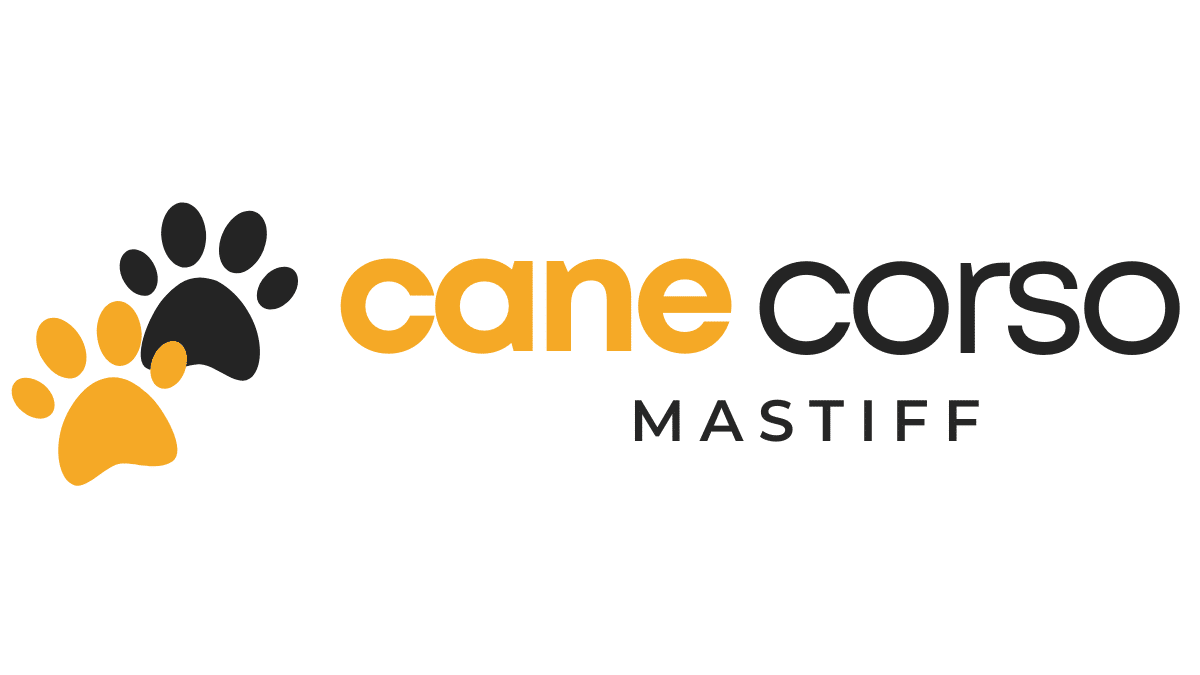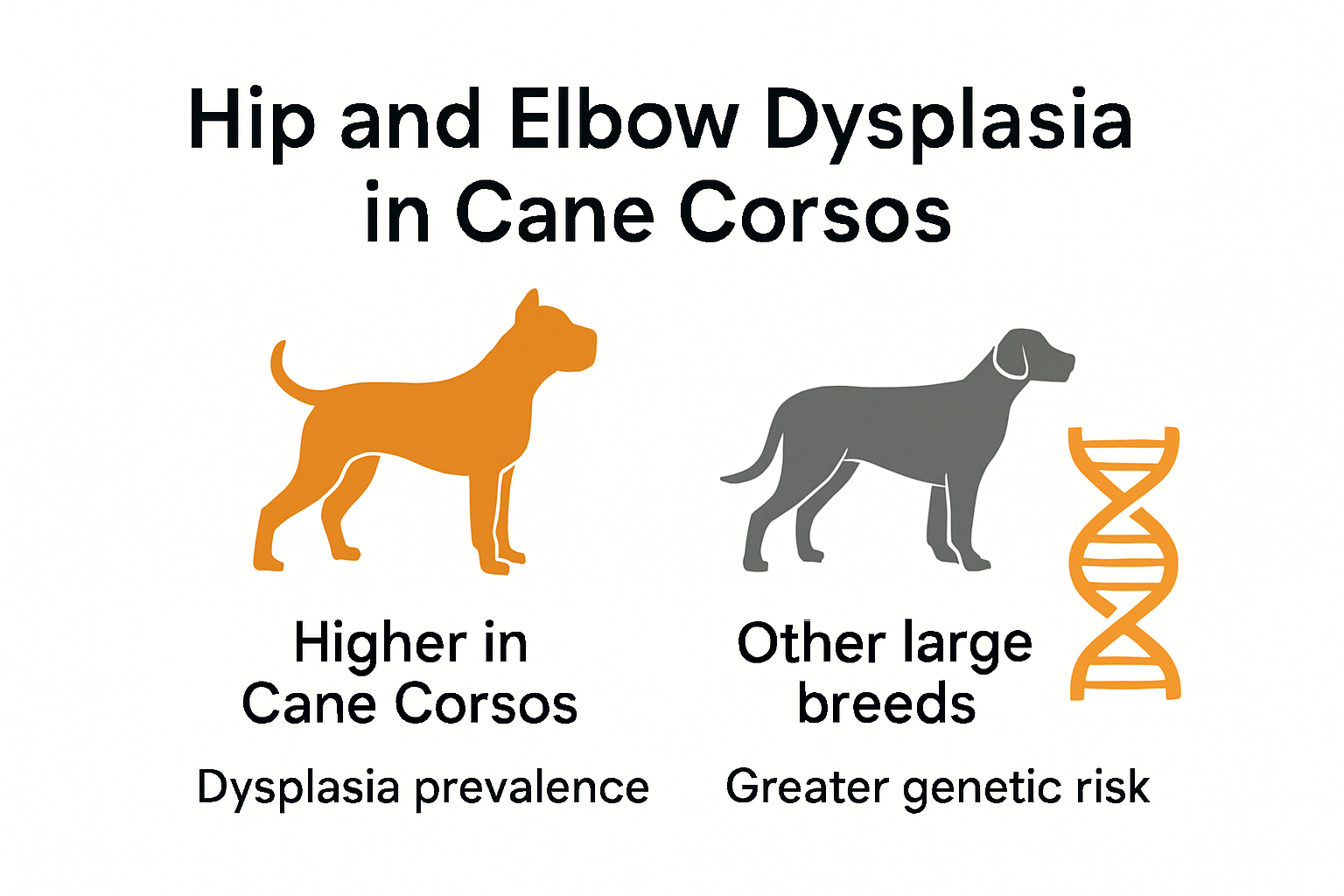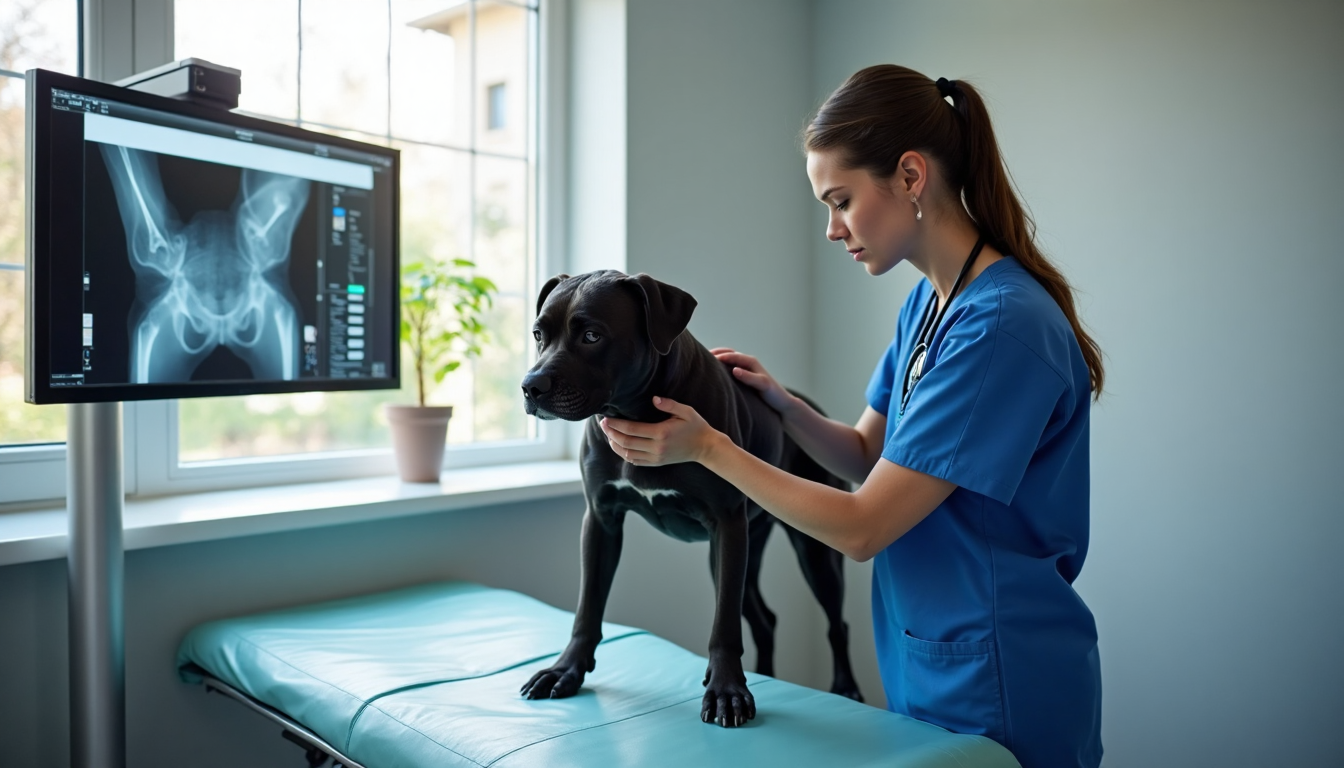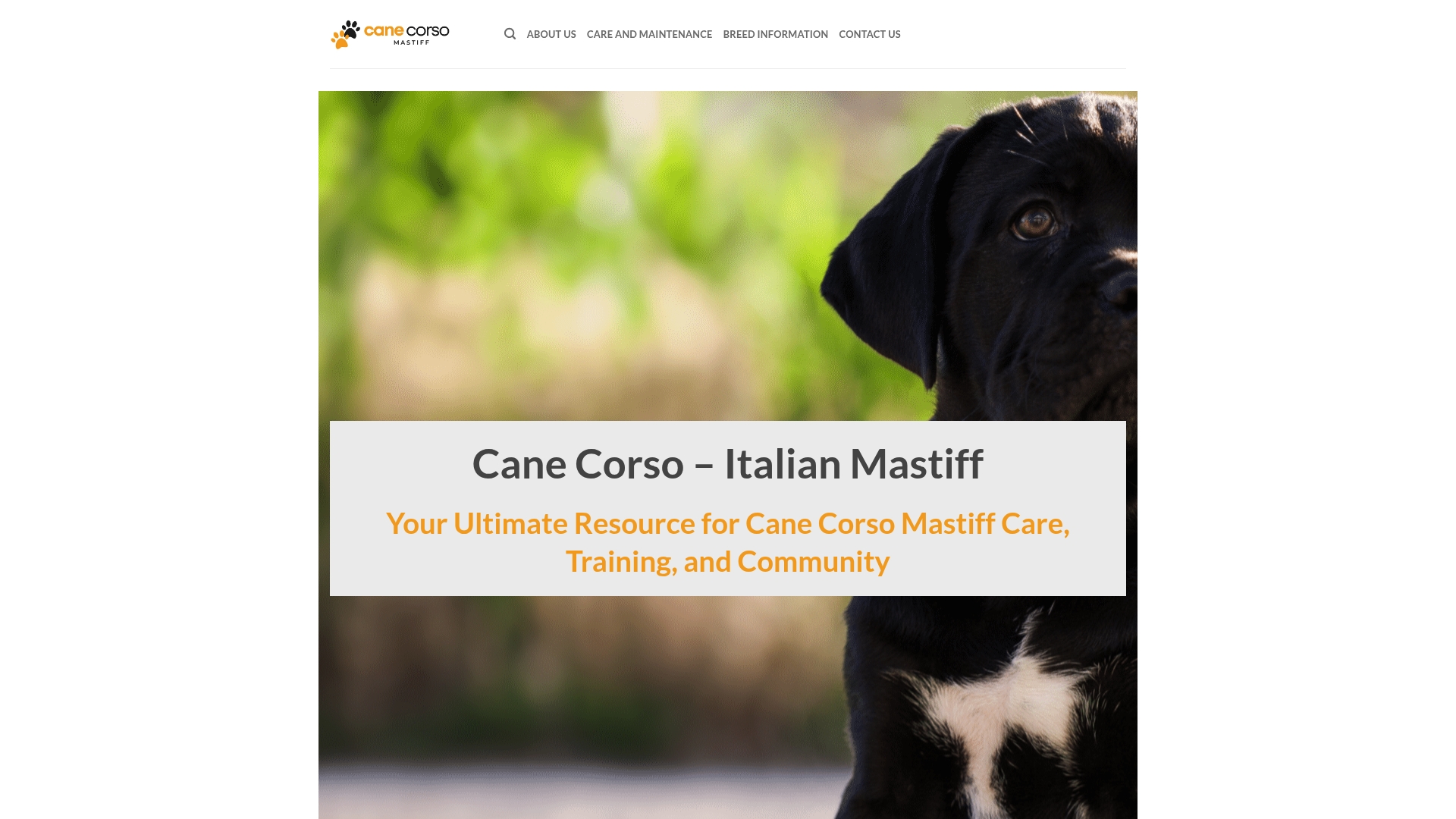Cane Corsos are majestic, powerful dogs, but their size comes with a hidden challenge that worries many owners. Here is a shocker. Nearly 60 percent of Cane Corsos develop hip dysplasia at some point in their lives. You might expect that modern breeding or good care has solved this problem. The reality is, Cane Corsos remain one of the most genetically at-risk breeds for joint issues, and your vigilance matters more than ever if you want those strong legs to stay pain-free.
Table of Contents
- Common Joint Issues In Cane Corsos
- Signs Your Cane Corso Has Joint Pain
- Best Preventative Care For Joint Health
- Recommended Treatments And Home Support
Quick Summary
| Takeaway | Explanation |
|---|---|
| Cane Corsos are genetically predisposed to joint disorders | Cane Corsos have a significant risk of conditions like hip dysplasia, with a prevalence of 59.7%, necessitating proactive management by owners. |
| Early detection of joint pain is crucial | Owners should monitor for signs such as limping, stiffness, and behavioral changes, which can signal underlying joint issues that require veterinary attention. |
| Preventative care is essential for joint health | Prioritizing proper nutrition, weight management, and controlled exercise can help mitigate the risk of joint deterioration in Cane Corsos. |
| Comprehensive treatment plans are recommended | A combination of medical interventions, nutritional support, and home care strategies enhances joint health and mobility for Cane Corsos suffering from joint issues. |
Common Joint Issues in Cane Corsos
Cane Corso joint health requires understanding the breed’s unique genetic predispositions to specific musculoskeletal challenges. These powerful dogs face several significant joint problems that can impact their quality of life and long term mobility.
Genetic Predisposition to Joint Disorders
The Cane Corso breed carries a heightened genetic risk for joint-related conditions. Research from veterinary studies reveals a startling statistic: these magnificent dogs experience some of the highest rates of joint disorders among large breed dogs. A comprehensive 14-year study in France found that Cane Corsos had an extraordinary 59.7% prevalence of hip dysplasia, making them particularly vulnerable to joint complications.
Italian research further substantiates these findings. A detailed analysis of 32,900 dogs demonstrated that Cane Corsos have a significantly elevated risk of hip dysplasia compared to other large breeds. The study calculated an odds ratio of 1.53, underscoring the breed’s genetic susceptibility to joint issues.
Primary Joint Disorders Affecting Cane Corsos
Cane Corso owners must be vigilant about several key joint disorders that commonly impact this breed. Hip Dysplasia represents the most prevalent condition, characterized by abnormal hip joint formation that leads to progressive deterioration. This genetic disorder causes the ball and socket joint to develop improperly, resulting in painful movement and potential arthritis.
Elbow dysplasia emerges as another critical concern. This inherited condition involves malformation of the elbow joint, causing uneven weight distribution and potentially leading to chronic pain. The structural irregularities can cause significant mobility restrictions and require careful management.
Additionally, arthritis frequently develops in older Cane Corsos. The combination of their large size, genetic predispositions, and potential early joint damage creates an environment where degenerative joint disease becomes increasingly likely. Our comprehensive guide on understanding common Cane Corso diseases provides deeper insights into these complex health challenges.
Understanding these joint issues is crucial for proactive management. Early detection, proper nutrition, controlled exercise, and regular veterinary screenings can significantly mitigate the potential long term impact of these genetic vulnerabilities. By recognizing the signs and implementing preventative strategies, Cane Corso owners can help their loyal companions maintain optimal joint health and enjoy a more comfortable, active life.
The key lies in knowledge, vigilance, and a commitment to comprehensive care that addresses the breed’s unique physiological characteristics.
Here’s a statistics table highlighting the prevalence and risk data for Cane Corso joint disorders discussed above:
| Disorder | Prevalence (%) | Odds Ratio (vs. Other Large Breeds) | Notes |
|---|---|---|---|
| Hip Dysplasia | 59.7 | 1.53 | Highest prevalence among large breeds |
| Elbow Dysplasia | Not stated | Not specifically given | Significant concern, inherited disorder |
| Arthritis (senior) | Common in older dogs | Not specified | Increased risk due to size & genetics |
Signs Your Cane Corso Has Joint Pain
Recognizing joint pain in your Cane Corso requires careful observation and understanding of subtle and overt behavioral changes. These powerful dogs often mask discomfort, making early detection critical for preventing long term mobility issues.
Physical Manifestations of Joint Discomfort
Physical signs represent the most immediate indicators of joint problems in Cane Corsos. Veterinary orthopedic specialists highlight several key symptoms owners should monitor. Limping or favoring certain legs during movement is a primary red flag. This asymmetrical gait suggests localized joint pain or potential structural damage.
Stiffness becomes particularly noticeable after periods of rest. Your Cane Corso might struggle to rise from a lying position, exhibiting visible discomfort and reluctance to move. Morning movements tend to be more challenging, with joints feeling particularly rigid and painful. Watching your dog’s initial movements after sleeping or extended periods of inactivity can reveal significant joint health insights.
Behavioral and Performance Changes
Beyond physical symptoms, behavioral shifts provide crucial joint pain indicators. Research from veterinary behavioral experts reveals that dogs experiencing chronic joint discomfort often display unexpected emotional and social changes. Irritability or sudden aggression can signal underlying pain, especially when touched in specific areas.
Decreased activity levels represent another significant warning sign. A once energetic Cane Corso becoming reluctant to play, climb stairs, or engage in previously enjoyed activities strongly suggests joint complications. These large breed dogs typically maintain high energy levels, so noticeable lethargy warrants immediate veterinary attention.
Advanced Warning Signs and Progression
As joint issues progress, more complex symptoms emerge. Muscle atrophy around affected joints indicates ongoing deterioration. Your dog might develop an altered stance or walking pattern to compensate for pain. Our comprehensive guide on senior Cane Corso care offers additional insights into managing these progressive changes.
Weight distribution changes can also signal joint problems. Observing how your Cane Corso shifts weight while standing or walking provides critical diagnostic information. Consistent uneven weight bearing suggests potential hip or elbow joint issues that require professional evaluation.
Early detection remains the most powerful tool in managing Cane Corso joint health. Regular veterinary screenings, attentive observation, and proactive management can significantly mitigate potential long term mobility challenges. Understanding these signs empowers owners to intervene early, ensuring their loyal companions maintain optimal quality of life.
The following summary table outlines key physical and behavioral signs of joint pain in Cane Corsos, helping owners quickly recognize potential issues:
| Category | Sign/Symptom | Description |
|---|---|---|
| Physical | Limping/Favoring leg | Asymmetrical gait, localized pain |
| Physical | Stiffness after rest | Difficulty rising, especially in morning |
| Physical | Muscle atrophy | Thinning of muscles near affected joints |
| Physical | Altered stance/gait | Changed posture or movement pattern |
| Behavioral | Decreased activity/lethargy | Less play, reluctance to exercise |
| Behavioral | Irritability or sudden aggression | Especially when touched in sore areas |
| Behavioral | Reluctance with stairs/jumping/playing | Avoidance of previously enjoyed tasks |
Best Preventative Care for Joint Health
Preventative care represents the cornerstone of maintaining optimal joint health for Cane Corsos. Understanding and implementing strategic approaches can significantly reduce the risk of joint deterioration and ensure your powerful companion maintains mobility and quality of life.
Nutrition and Weight Management
Weight control emerges as the most critical factor in joint health preservation. Research from veterinary nutritionists demonstrates that maintaining an optimal body weight directly reduces joint stress and delays osteoarthritis onset. For Cane Corsos specifically, even a few extra pounds can exponentially increase joint strain.
Nutritional strategies play a pivotal role in joint protection. Omega-3 fatty acids prove particularly beneficial. Scientific studies reveal that eicosapentaenoic acid (EPA) and docosahexaenoic acid (DHA) possess powerful anti-inflammatory properties that can mitigate joint inflammation and support overall joint health. Incorporating fish oils or specially formulated joint support supplements can provide significant protective benefits.
Exercise and Physical Conditioning
Controlled exercise represents another fundamental pillar of joint health maintenance. Large breed dogs like Cane Corsos require carefully structured physical activity that strengthens muscles without overloading joints. Low impact exercises such as swimming and controlled walking help maintain muscle tone while minimizing joint stress.
Our comprehensive guide on understanding common Cane Corso diseases highlights the importance of progressive, age appropriate exercise routines. Puppies and young dogs require especially careful exercise management to prevent early joint damage. Gradually increasing activity levels and avoiding high impact movements protects developing joint structures.
Regular Veterinary Monitoring and Interventions
Proactive veterinary care serves as the ultimate preventative strategy. Regular screenings can detect early signs of joint issues before they become significant problems. Specialized orthopedic examinations, annual joint health assessments, and diagnostic imaging provide critical insights into your Cane Corso’s musculoskeletal condition.
Additional preventative interventions might include targeted physiotherapy, hydrotherapy, and specialized rehabilitation techniques. These approaches not only maintain joint flexibility but can also strengthen supporting muscle groups, creating a comprehensive protective strategy.
Preventing joint issues requires a holistic approach combining nutrition, exercise, weight management, and professional medical oversight. By implementing these strategies early and consistently, Cane Corso owners can significantly enhance their dog’s long term joint health and overall quality of life. The investment in preventative care pays dividends through improved mobility, reduced pain, and extended active years for these magnificent dogs.
Recommended Treatments and Home Support
Treating joint issues in Cane Corsos requires a comprehensive approach that combines professional medical interventions with thoughtful home care strategies. Understanding the range of available treatments can help owners provide optimal support for their dog’s joint health and mobility.
Medical Interventions and Professional Treatments
Veterinary specialists recommend a multi-faceted treatment approach for Cane Corso joint health. Pharmaceutical interventions play a crucial role in managing pain and inflammation. Non-steroidal anti-inflammatory drugs (NSAIDs) can provide significant relief, though they require careful veterinary monitoring to manage potential side effects.
Advanced medical treatments have emerged as promising options for joint support. Regenerative therapies like platelet-rich plasma (PRP) injections and stem cell treatments offer innovative approaches to joint healing. These cutting-edge interventions can potentially reduce inflammation and promote tissue repair, providing hope for dogs with advanced joint deterioration.
Nutritional and Supplemental Support
Nutritional strategies form a critical component of joint health management. Research on omega-3 fatty acids demonstrates significant benefits in managing osteoarthritis. Supplements containing EPA and other anti-inflammatory compounds can decrease pain and improve mobility. Glucosamine and chondroitin supplements also show promise in supporting joint cartilage health and reducing inflammation.
Our comprehensive guide on understanding common Cane Corso diseases provides additional insights into nutritional management. Owners should work closely with veterinarians to develop a tailored nutritional approach that addresses their individual dog’s specific joint health needs.
Home Care and Physical Support
Home-based interventions can significantly improve a Cane Corso’s joint health and comfort. Veterinary rehabilitation experts highlight the importance of targeted physical therapies. Hydrotherapy offers an excellent low-impact exercise option, helping maintain muscle mass and joint mobility without excessive stress.
Modifying the home environment proves crucial for dogs with joint issues. Orthopedic dog beds provide critical support, reducing pressure on painful joints. Non-slip mats can help prevent slipping and additional joint strain. Ramps or stairs can assist dogs struggling with mobility, allowing them to access furniture or navigate challenging surfaces more easily.
Managing a Cane Corso’s joint health requires a holistic approach combining professional medical care, nutritional support, and thoughtful home interventions. Each dog’s journey is unique, demanding personalized strategies and consistent, compassionate care. By implementing these comprehensive treatments, owners can help their loyal companions maintain quality of life and manage joint challenges effectively.
Frequently Asked Questions
What joint issues are Cane Corsos prone to?
How can I tell if my Cane Corso is experiencing joint pain?
What can I do to prevent joint issues in my Cane Corso?
Are there treatments available for Cane Corso joint issues?
Take Charge of Your Cane Corso’s Joint Health Today
You want your Cane Corso to experience strong, pain-free movement for years to come. If you worry about genetic joint problems like hip or elbow dysplasia, you’re not alone. Many owners just like you face the challenge of early detection, keeping their dog’s weight in check, and choosing the right preventative care. When you understand how important it is to spot signs of pain and give your dog the best support, the next steps become clear. Find expert answers and guidance in our Cane Corso Health and Wellness section. Our resources provide certainty when you need it most.
Do not let joint pain limit your Cane Corso’s future. Visit Cane Corso Mastiff for trusted advice, care tips, and a caring community that helps your loyal friend stay active and comfortable. Explore today and start giving your Cane Corso the lifelong health they deserve.
Recommended
- Understanding Common Cane Corso Diseases: Guide for Owners 2025
- Cane Corso Exercise Without Stress: Easy Routines for 2025
- Best Dog Food for Cane Corso: Top Picks & Feeding Guide 2025
- Top Cane Corso Feeding Tips for Healthy Dogs in 2025
- Best Cane Corso Puppy Food for Healthy Growth – Cane Corso Mastiff
- How to Care for Senior Cane Corso: Tips for 2025 Owners




